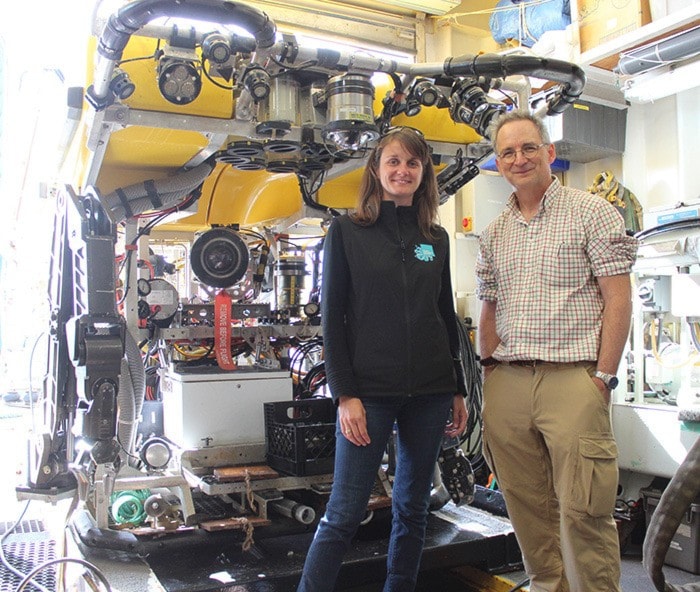Hercules isn't just the name of the hero in classical greek mythology anymore.
It is also the name of the remotely-operated vehicle (ROV) that will be scouring the ocean floor as part of the University of Victoria's Ocean Networks Canada's unprecedented expedition of unexplored Canadian waters, which set out from Ogden Point on Tuesday (Aug. 25).
“We know very little about the ocean, less than five per cent has been mapped. We know more about Mars and the moon than our own planet,” said Kate Moran, president of Ocean Networks Canada and chief scientist on the expedition. “We need to fully understand so we can actually make decisions about what do we do as the oceans change.”
As part of the three-week-long expedition, two ships — exploration vessel Nautilus and research vessel Thomas G. Thompson, will visit eight sites on ONC's west coast observatories in the Salish Sea and Pacific Ocean.
Hercules, which can be operated at depths of up to 4,000 metres, is equipped with high-definition cameras, sensors, LED lights, and two manipulator arms so scientists can collect samples from the ocean floor.
“It's got a very sophisticated navigation system with that and acoustic sensors that watches the bottom and tells you the speed that you're doing. You can get very good navigation without any outside references at all,” said Jim Newman, who built Hercules.
On the expedition, Hercules and Argus, another ROV, will be controlled by pilots and used to install high tech systems to measure underwater landslides, microphones to detect whales and understand ship noise, sensors to measure how offshore gas hydrates change as climate changes, and a tsunami meter to better predict coastal flooding.
“They work in tandem. Argus sits right above Hercules in the water and then they're tethered together and it's all fibre optics,” said expedition leader Allison Fundis.
Hercules can stay down for almost three days and provides realtime video streams of the ocean abyss.
“It's very exciting the technology that allows you to explore more than ever before and spend time with your family,” said Robert Ballard, owner of Nautilus and president of the Ocean Exploration Trust.
Though he won't be travelling with the expedition, Ballard said he'll be watching the feed from home and is excited about what the 50-member crew team might discover.
“People ask what you're going to discover next, but you have no idea. If we knew — it wouldn't be a discovery,” said Ballard, who discovered the RMS Titanic in 1985.
To watch the realtime feed from Hercules, visit Nautiluslive.org.or oceannetworks.ca.
